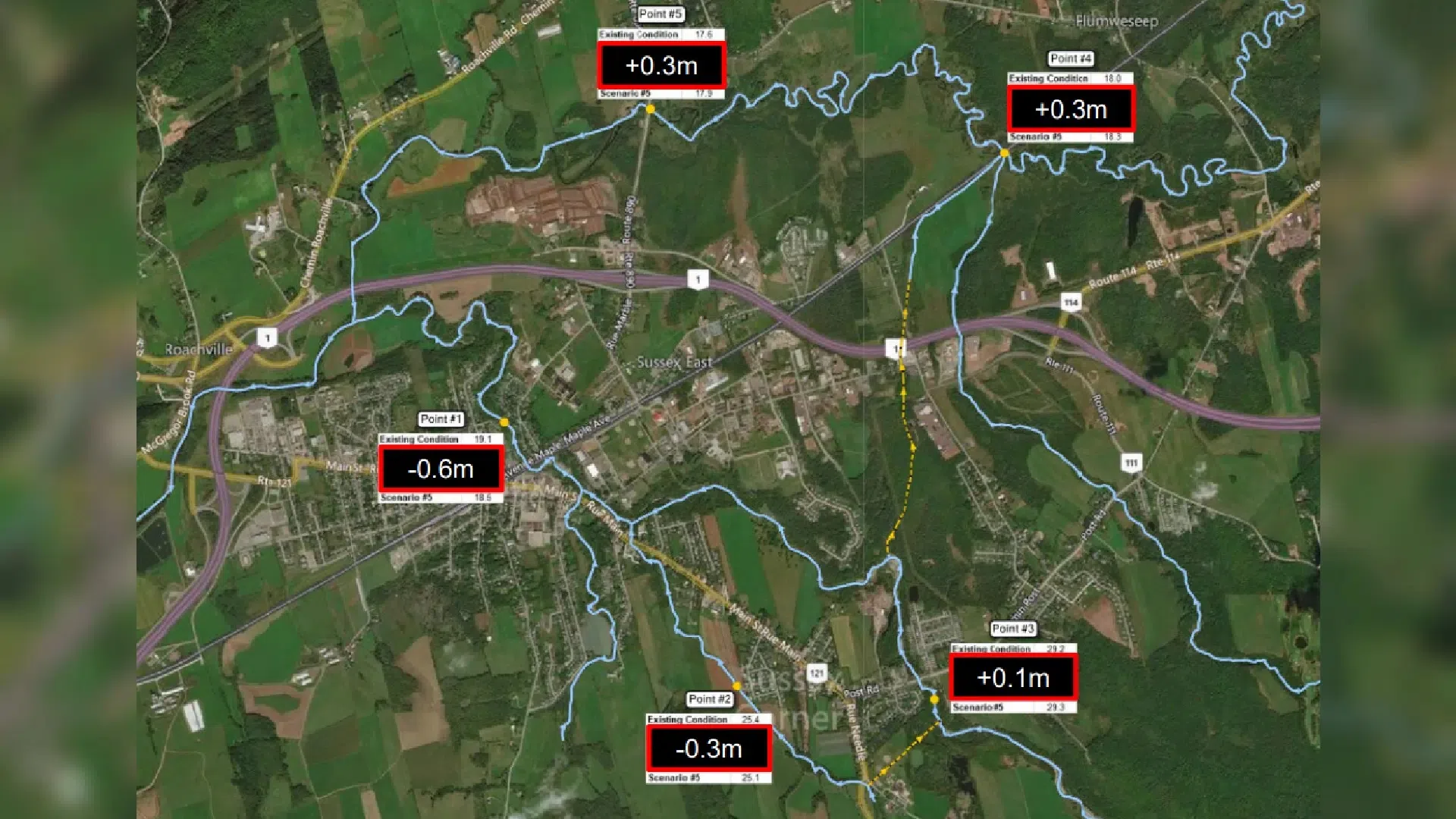The Impact Assessment Agency of Canada is seeking comments on the proposed Sussex flood diversion project.
Officials say the $38-million project aims to divert flood waters away from the downtown core during heavy rain events.
Two diversion channels have been proposed to divert flows from Parsons Brook into Trout Creek and then into the Kennebecasis River.
To accommodate the diversion channels, two bridge/overpass structures will need to be constructed on Route 1, along with a culvert or a bridge at Leonard Drive.
Officials also plan to raise the bridge deck elevations at Route 890 and the adjacent covered bridge to accommodate temporary water level increases in the Kennebecasis River during flood events.
Temporary water level increases in the Kennebecasis River during flood events will be addressed by raising the bridge deck elevations at Route 890 and the adjacent Salmon Covered Bridge.
According to documents submitted to the agency, design work is expected to be completed during 2025 with full project commissioning tentatively scheduled for 2028.
During an announcement last June, the province committed more than $13 million for the work while Ottawa announced a contribution of more than $15 million. The town would pay more than $10 million.
“Today was a milestone day for Sussex,” Scott Hatcher, the town’s chief administrative officer, told our newsroom after the announcement.
“It’s the beginning of the end of our flood mitigation and the damages associated with flooding in our community.”
Hatcher said the town has determined that around 650 residential and business properties are impacted by adverse flooding effects.
The agency is holding three virtual information sessions next Tuesday and Wednesday so people can learn more about the project, the impact assessment process, and how to submit comments.
Comments can be submitted online until Feb. 10 and will be published online as part of the project.
Meanwhile, part of the overall funding will be used to build a berm to protect about 80 homes in the Meadow Crescent subdivision from flooding.
Because that part of the project does not require an environmental impact assessment, Hatcher said it could be constructed by March.








